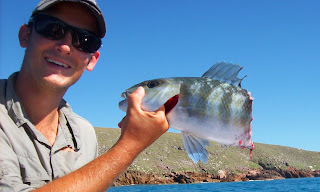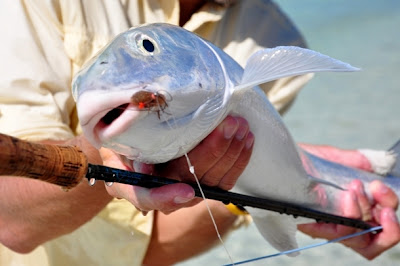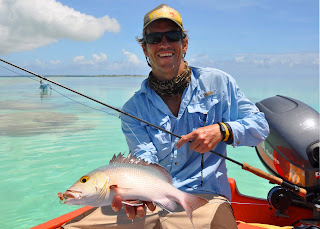Over the years I've realised more and more the importance of the
role of eyes when tying flies.
Years ago I used just burn the end of a piece of mono and waalaa,
nice tie eyes that looked real enough. These were used on crab, shrimp,
creature and any other fly that needed stalk eyes. As far as fresh water eyes
went I barely bothered. Only the biggest streamer flies got the most basic
black dots.
My first trip to the Seychelles in 2001 taught me a little more with
regards to the importance of big, shiny eyes on big flies as triggers. I hadn't
until then given much thought as to why fish ate flies and those all important
triggers. I was young and the realisation as to why realisitic flies weren't
always the most effective was rather profound.
As my Dad had always said, flies aren't tied to catch fisherman;
they're tied to catch fish. Until then I had always taken this statement as a
tongue-in-cheek excuse for the not so neat and tidy array of flies that adorned
his fly box.
I began in earnest to read and experiment with colours and movement
in my trout and yellowfish flies. And the results started to show. One of
friends once called one of my flies an abomination and should never be cast at
anything except bass, yet he still asked for one at the end of the days
fishing.
As I explored the salt more and more, I began to take heed of the
fact that eyes were of critical importance in the triggering of fish aggression
and fly-eating behaivour.
I started playing with different materials for eyes. Glass beads -
silver, red, orange and even blue. Using mono, heat and superglue I was able
concoct a number of different eyes types. Sometimes even the use of tungsten
beads in the eyes to change the angle of drift or swim of a fly.
 |
| A rough epoxy finish and ready for tying. Still working at final polished finish that I'm happy with. |
It was recently that I saw a fly with the most amazing eyes I have
ever seen on a fly. These had taken time and effort. Layered with colour,
sparkle and shine. I'm a fly tyer who doesn't like spending hours tying a fly,
let alone making one aspect of the fly. But realised I may have to revise my
attitude on time when it came to these eyes.
And so the playing began. Melting mono, playing with nail polish
that that always brings raised eye brows when purchased, covering with glitter
and finishing with Hard-As-Nails or epoxy.
The results have been mixed but I have settled to two types that
I'll be using on all stalk-eyed flies for awhile!
































